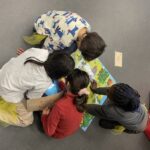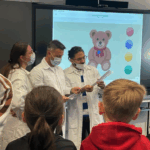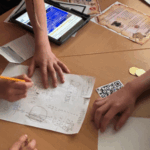
Speculative critical design prototypes
Lise introduced us to our program, which involved creating a speculative critical design piece. Her instructions aligned with our visit of the exhibition « The Future is present » at the design museum later that day.
But what exactly is speculative critical design (SCD) ? It is a form of design expressing the desire to question everyday objects in our lives and their representations within society. It confronts the traditional commercial design practices. The aim is to challenge the contemporary representation and use of products as well as norms, instead of simply reinforcing them through reproduction. The SCD explores these ramifications through the development and domestication of technology.
Our challenge was to design an object or a statement relating to your obstacles (which we discovered later on). We then had to explain to the others how these obstacles related to our statement. The incorporation and use of the Lego SPIKE was essential to our design prototype.
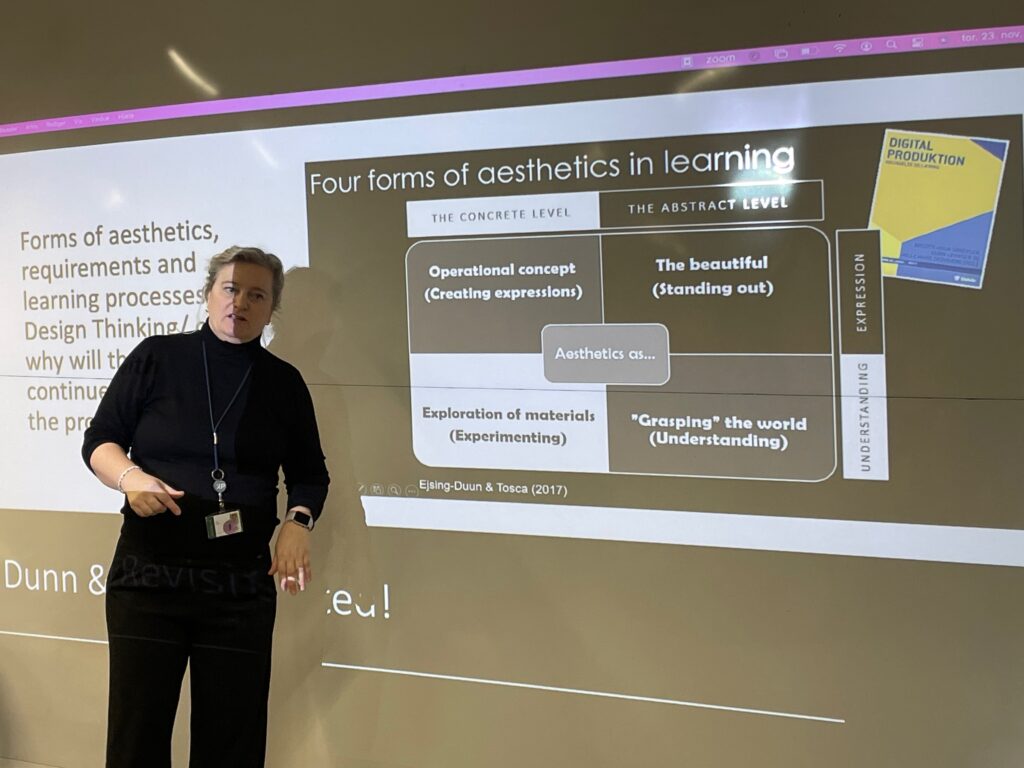
Lise then explained to us the different design prototypes and the different aesthetics when creating a project. By presenting us this model, Lise made interesting links with teaching. She explained how when creating a project in school, we all (teachers and pupils) tend to center our creations to either the Operational concept, or The beautiful. We want our devices to be expressing something, but to also stand out by their beauty. She nevertheless encouraged us to develop the Exploration of materials, in order to let ourselves be creative without feeling the burden of thinking « this needs to be pretty ».
After this, we got divided into groups. We had sheets of paper with the instruction to finish the following sentences (which will later on be our obstacles) ;
- The past is…
- A core value in the future is …
- The technology in the future is …
We exchanged our propositions with the other groups. Before putting our ideas into creation, we had to give a « gift » to another group. It consisted in an object they had to incorporate in their construction. We then had one hour and a half precisely to create a design prototype using Lego SPIKE.
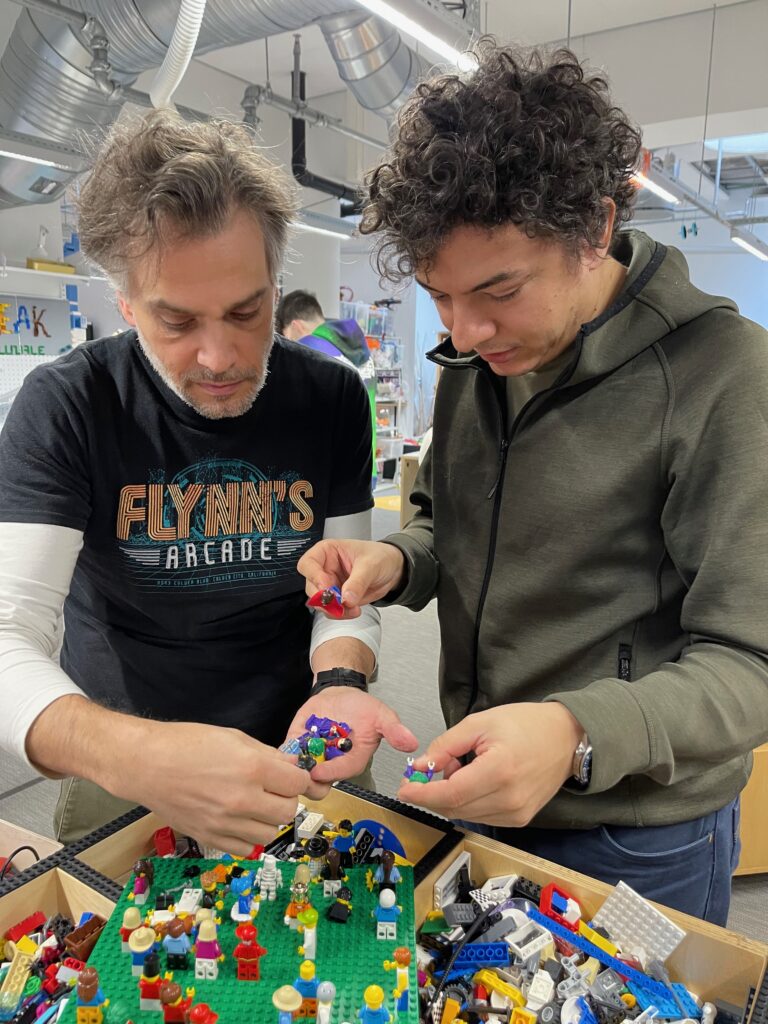
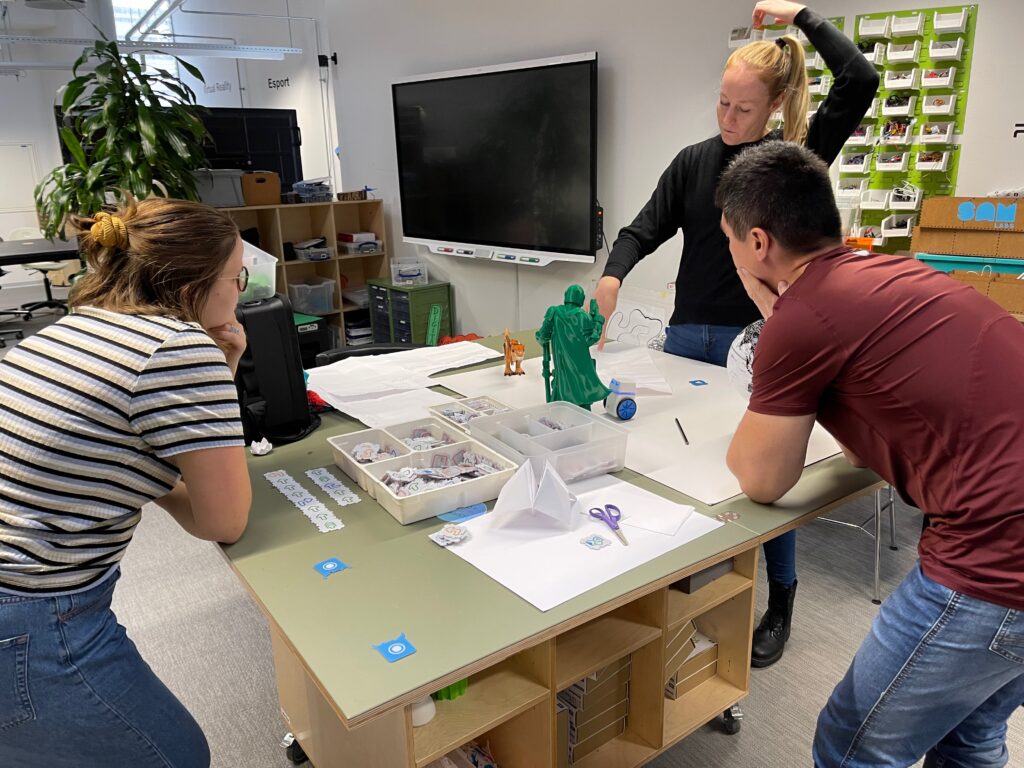
Thanks to the versatility of the FCL, we had more than enough material to work through our prototypes. Despite it being challenging, we thought this activity would be quite interesting to develop in class, allowing our pupils to fully integrate their creativity with digital tools. Furthermore, the Lego SPIKE products are easily accessible and manageable on an iPad, making it all the more inclusive for our pupils.
But then came the time to present our prototypes ;
Prototype 1
Sentences given : the past is racist, the future is a lonely community, technology in the future is used for the greater good.
Gift to incorporate : mirror
We decided to use the mirror as the central piece. Because our sentences were on both extreme sides of a spectrum, we wanted to create a meditative statement.
On the side of the past, we portrayed racism as an angry face distorting itself, thanks to the clay we used. It stood up on a stick, masking the skeleton to see clearly. We also chose the skeleton as a way to present that racist views are a dying way of seeing the world.
On the side of the future, the « lonely community » aspect made the task trickier. We wanted to use clay too and elevate the figure on a stick, thus representing this aloneness, without making the face look saddened. It is lonely but never feels alone.
In order to show how technology would be used for the greater good, we incorporated the friendly robot Eilik and some medicine bottles.
Prototype 2
Sentences given : the past was light, a core value in the future is uncertainty and standardisation, technology in the future is useful and green.
Gift to incorporate : Oscar’s statue
My colleagues were given a tough challenge when we gave them the Oscar’s statue. They decided to use it as a representation of the past, with their given sentence The past was light. This romanticization of the past perfectly fits with the image of the Oscar’s statue and our habit of only remerbering the good parts of the past, or even making it seem lighter than it actually was.
With their prototype, they took a spin towards movies, super hero movies to be more exact. Their train of thought started with the nature of these movies being redundant ; we know how it is going to end and the values portrayed ressemble one movie to another. The statement is at follows : movies and our daily lives get standardised, but that doesn’t not exclude its possibility of a beneficial development (showed here with the windmill).
Prototype 3
Sentences given : The past is forgettable, the future is unknown, technology in the future is sustainable.
Gift to incorporate : T-rex toy
In this last prototype, our colleagues created a small maze that the robot has to get out of, making the right decisions. It can either go towards violence (represented by the 3D-printed statue of Boba Fett), or towards the exit of the maze and join the eco-friendly future awaiting (being represented by a statue of the earth). despite it being presented as a happy ending, it still remains unknown and thus, full of surprises.
Unlike the other prototypes, this team decided to add another sentence describing their work ; something or someone traces the robot’s way. They first let us experiment their creation, and then explained their train of thought ; they wanted to join the traditional scientific view of the world being solely based on facts with a more spiritual or holistic approach. In this scenario, we are the powerful entities guiding the robot to its destination.
This challenge allowed each and everyone of us to learn something new. Despite having never worked with Lego SPIKE in the past, we all got around to it and were able to incorporate them in our prototypes. We also learnt to use what our environnement could provide in order to use it. Not being used to this kind of learning, we definitely felt challenged in every aspect of the project ; finding materials, experimenting, failing, accepting our prototypes aren’t perfect, etc.
But I will end this article on this note : through experience, everyone can grow and learn. If we want to properly engage that creative mindset with our pupils, we have to start by reflecting that goal ourselves. Which again, puts us in the place of the learner again, experimenting, failing and trying to experiment or create something without thinking of its aesthetics. Just like Lise encouraged us to be earlier that morning.
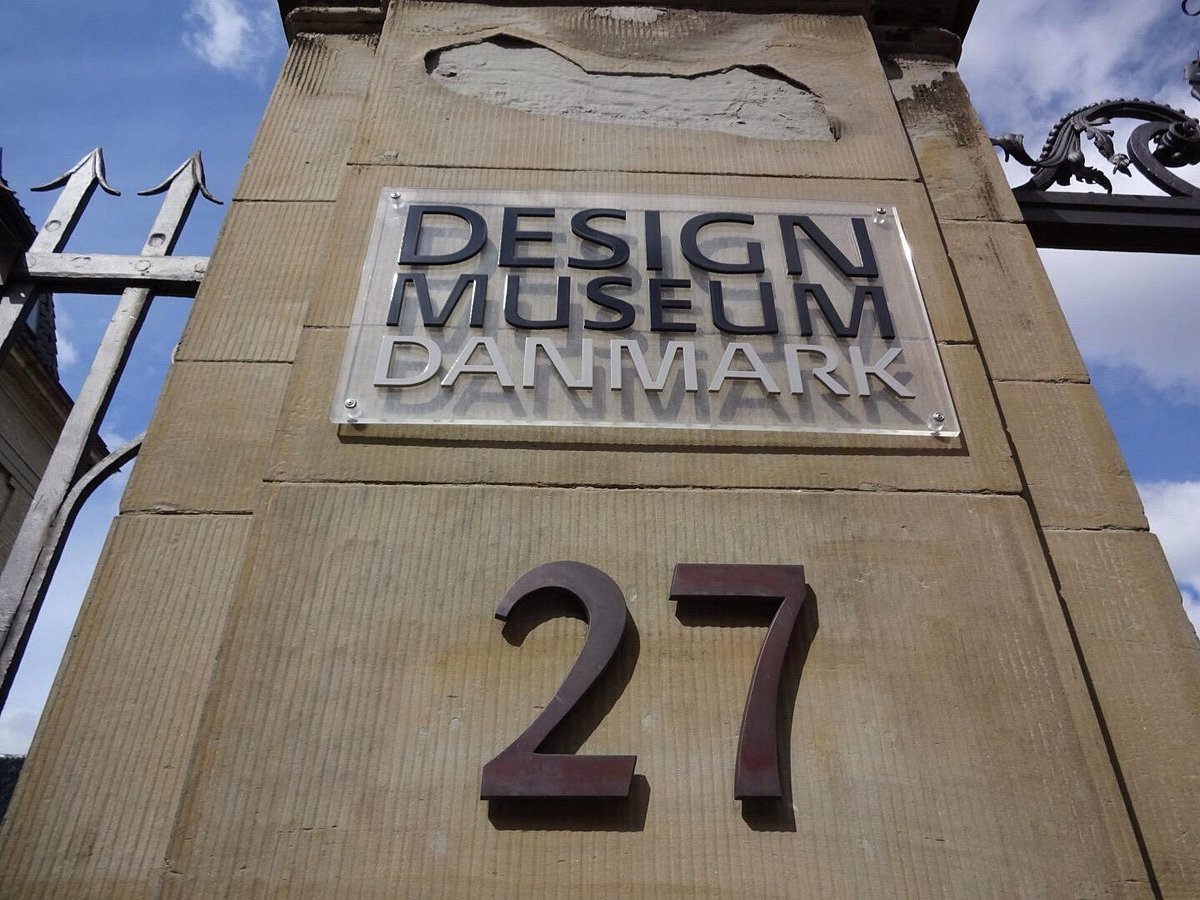
Visite du musée du Design
Après une session fascinante sur le « Speculative Critical Design » à l’université, nous avons eu l’opportunité de visiter le musée du Design de Copenhague. Cette visite a permis de concrétiser les concepts abordés lors de l’activité, en explorant des œuvres d’art qui repoussent les limites de la créativité et de l’innovation. Parmi les pièces les plus marquantes, une lampe avec un abat-jour en intestins de vaches et un tableau représentant des « potion » sur les émotions qui nous ont particulièrement intrigués.
L’une des pièces les plus intrigantes était sans doute la lampe avec un abat-jour fabriqué à partir d’intestins de vaches. Cette création, à la frontière de l’art et du design, a suscité de nombreuses discussions. Elle illustre parfaitement le concept de « Speculative Critical Design », où l’objet quotidien est repensé à travers une lentille provocatrice. Cette lampe, bien que fonctionnelle, pousse à réfléchir sur les limites entre l’art, le design et l’éthique, ainsi que sur notre relation avec les matériaux organiques et leur utilisation dans des contextes inattendus.
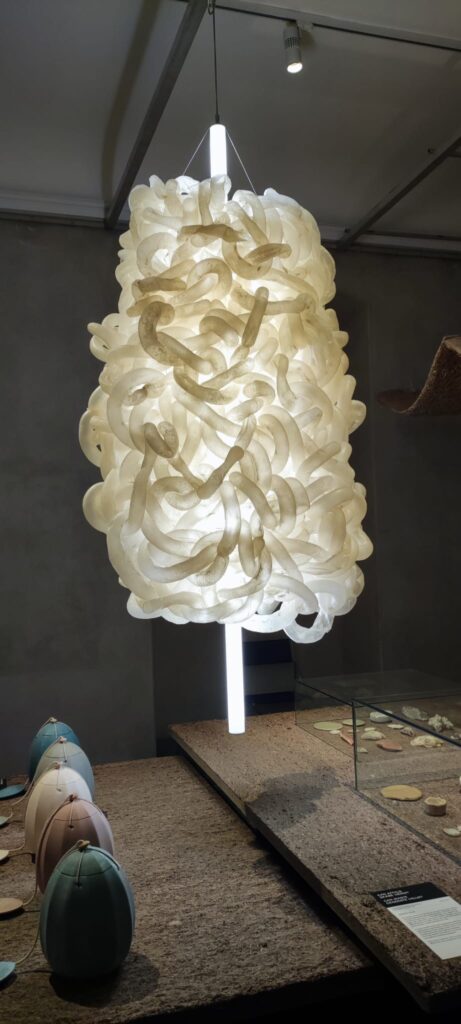
Un autre point fort de la visite fut la découverte d’un tableau représentant divers « shots » associés à des émotions, addictions… etc. Cette œuvre est captivante par sa capacité à visualiser l’invisible – les émotions humaines. Chaque potion, avec sa couleur et sa texture unique, semblait incarner une émotion spécifique, invitant les spectateurs à une introspection sur la manière dont nos émotions pourraient être régulée et comment nous nous abreuvons de celle-ci dans notre quotidien.

Cette visite au musée a été une extension naturelle de l’activité sur le « Speculative Critical Design ». Elle a permis de voir comment les concepts théoriques peuvent être traduits en objets artistiques. En nous confrontant à des œuvres qui défient les conventions, la visite stimule créativité et la réflexion critique. Elle a également renforcé l’idée que le design peut être un puissant moyen d’expression et de questionnement sur notre monde pour les élèves.

